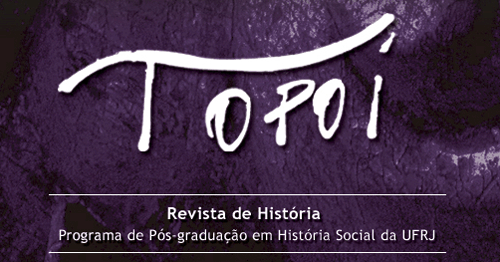ABSTRACT
In this paper, we will discuss the conditions for slavery reproduction in Rio de Janeiro´s plantations after the end of the Atlantic slave trade. In order to do that, we studied the slavery demography of Commendator Joaquim Breves’ plantations, which were a symbol of slavery expansion on the coffee valley. Through one of the plantations’ registers, we analyze the demographical development in this complex of farms. We demonstrate that, after the 1860s, a broad vegetative growth in those plantations began to develop through a movement that had different meanings to slaves and their owners. Thus, we will analyze the dimensions of slavery reproduction, and its limits, in the two decades preceding the downfall of slavery in Rio de Janeiro’s coffee plantations.
Keywords:
slavery; slave demography; slave family; Paraíba Valley; coffee plantations.

 Thumbnail
Thumbnail
 Thumbnail
Thumbnail
 Thumbnail
Thumbnail
 Thumbnail
Thumbnail
 Thumbnail
Thumbnail
 Fonte: Arquivo Municipal de Piraí (AMP). Livro de controle interno das fazendas do Comendador Joaquim Breves (1864-1888) Obs.: O eixo vertical registra o número absoluto de nascimentos das fazendas em destaque. Foram excluídos do gráfico 21 registros para os quais não localizamos as propriedades onde ocorreram os partos.
Fonte: Arquivo Municipal de Piraí (AMP). Livro de controle interno das fazendas do Comendador Joaquim Breves (1864-1888) Obs.: O eixo vertical registra o número absoluto de nascimentos das fazendas em destaque. Foram excluídos do gráfico 21 registros para os quais não localizamos as propriedades onde ocorreram os partos.
 Fonte: AMP. Livro de controle interno das fazendas do Comendador Joaquim Breves (1864-1888). Obs.: O eixo vertical registra o número absoluto de nascimentos. Vinte e um registros não foram incluídos no gráfico porque não foi possível saber em quais anos ocorreram.
Fonte: AMP. Livro de controle interno das fazendas do Comendador Joaquim Breves (1864-1888). Obs.: O eixo vertical registra o número absoluto de nascimentos. Vinte e um registros não foram incluídos no gráfico porque não foi possível saber em quais anos ocorreram.
 Fonte: AMP. Livro de controle interno das fazendas do Comendador Joaquim Breves (1864-1888). Obs.: O eixo vertical registra o número absoluto de nascimentos e óbitos. As fazendas registradas nos nascimentos se repetiram nos óbitos, com exceção de Santa Paulina, que não aparece no segundo registro.
Fonte: AMP. Livro de controle interno das fazendas do Comendador Joaquim Breves (1864-1888). Obs.: O eixo vertical registra o número absoluto de nascimentos e óbitos. As fazendas registradas nos nascimentos se repetiram nos óbitos, com exceção de Santa Paulina, que não aparece no segundo registro.
 Fonte: AMP. Livro de controle interno das fazendas do Comendador Joaquim Breves (1864-1888), Obs.: O eixo vertical registra o número absoluto de nascimentos e óbitos.
Fonte: AMP. Livro de controle interno das fazendas do Comendador Joaquim Breves (1864-1888), Obs.: O eixo vertical registra o número absoluto de nascimentos e óbitos.
 Fonte: AMP. Livro de controle interno das fazendas do Comendador Joaquim Breves (1864-1888). Obs.: O eixo vertical registra em números absolutos a diferença entre nascimentos e óbitos de crianças entre 0 e 14 anos.
Fonte: AMP. Livro de controle interno das fazendas do Comendador Joaquim Breves (1864-1888). Obs.: O eixo vertical registra em números absolutos a diferença entre nascimentos e óbitos de crianças entre 0 e 14 anos.